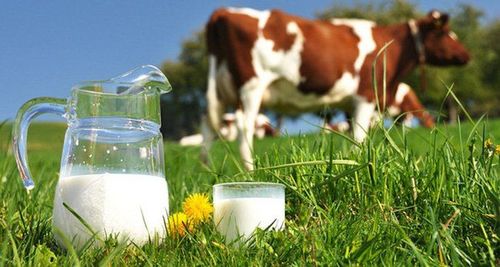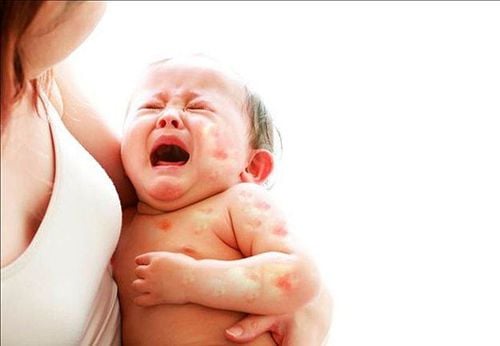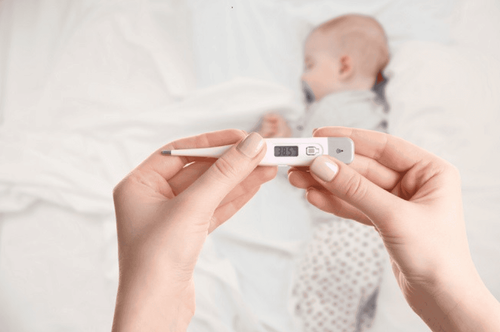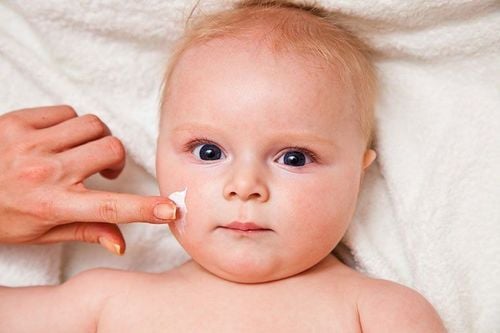This is an automatically translated article.
The article was written by Dr. Phan Nguyen Thanh Binh, Head of Nutrition - Dietetics Department, Department of Pediatrics - Neonatology, Vinmec Central Park International General Hospital.Milk protein allergy is very common in young children. If not detected early for appropriate nutrition, children are at risk of worsening progression or malnutrition due to malabsorption, gastroesophageal reflux or constipation - diarrhea. prolonged diarrhea, insufficient feeding for growth,... Children at risk of allergies include premature babies, children who need to take antibiotics early within 6 months after birth or have a family history of allergies.
1. Manifestations of milk protein allergy
Cow's milk allergy is not easy to recognize if symptoms do not manifest for a few minutes immediately after drinking milk or when starting to eat powdered milk containing milk. The most common manifestations in children allergic to cow's milk are hives, itching, and digestive disorders after drinking milk. These signs are easily confused with skin diseases, digestive diseases, so many parents do not think about the risk of their children having allergies to seek medical advice.Expression of rapid allergic reaction: Usually occurs suddenly with manifestations such as hives, redness, edema, vomiting, wheezing. More severe is a systemic anaphylactic reaction (shock) such as a rapid, light pulse, low blood pressure, cyanosis, difficulty breathing,... In this case, parents need to take the baby to the nearest medical facility immediately. for emergency treatment. Manifestations of delayed allergic reactions: Usually milder or not obvious, for example, children with atopic dermatitis, irritability, fussiness, frequent regurgitation and vomiting, abdominal cramps, diarrhea diarrhea (may have mucus, blood) or constipation, slow weight gain, and growth is not normal.
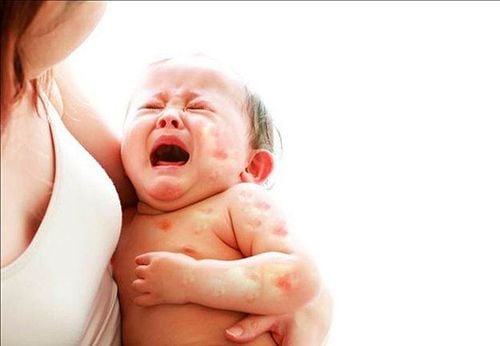
Biểu hiện hay gặp nhất ở bé dị ứng đạm sữa bò là nổi mề đay, ngứa, rối loạn tiêu hoá sau khi uống sữa.
2. Treatment when suspecting that the baby is allergic to cow's milk protein
Because the clinical manifestations of allergies are very diverse, some reactions can be life-threatening, so when an allergy is present, it is best to immediately take the patient to the nearest medical facility for treatment. treatment and definitive diagnosis.The process of milk adjustment and allergy diagnosis is as follows:
Discontinue use of suspected allergenic milk. Use milk substitute. Skin prick test (skin prick test). Specific IgE test (ELISA). Milk test (OFC). If the child's allergy is slow, just stop drinking cow's milk immediately (including yogurt, cheese, cake or powder containing milk,...).
Breast milk is the safest source of milk for allergic babies. However, because cow's milk protein can pass through breast milk, the mother's diet should eliminate foods containing milk and beef.
If breast milk is not available, cow's milk can be replaced with other protein-based milks such as goat milk, soy protein milk or cow's milk with hydrolyzed protein sources,... However, children are allergic. Cow's milk protein can be cross-allergic with milk protein of other animals such as goat, sheep... or soy protein. Therefore, when a child is allergic to cow's milk protein, they should not change milk on their own, but should take the child to see a specialist for advice and monitor the process of adjusting milk for the child.

Sữa mẹ là thức ăn tốt nhất cho bé dị ứng đạm sữa bò.
3. Nutrition for children allergic to cow's milk protein
Children allergic to cow's milk protein must avoid foods and drinks containing cow's milk protein.For children under 6 months:
For breastfed babies but have allergic symptoms, the doctor suspects cow's milk protein allergy, the mother will be advised by the doctor on a diet that eliminates cow's milk protein (condensed milk) , milk, cheese...) with or without the removal of eggs and soy. You need to supplement calcium and vitamin D when following this diet.
For babies without breast milk, the options are hydrolyzed cow's milk protein formula or amino acid formula. Parents can also find similar milk formulas, with the words "Hypoallergenic formula" on the package, "Extensively hydrolyzed formula" (fully hydrolyzed formula), "Amino acid- based formula” (amino acid formula).
For children from 6 months of age and older:
In addition to milk, children begin to receive complementary foods. Selection of complementary foods also follows the principle of avoiding ingredients containing cow's milk protein, fresh milk, cow's milk, powdered milk, whey, yogurt, cheese, ice cream,... If the use of milk substitutes is to difficult for many reasons (milk taste, price, availability), may encourage children to eat more solids; supplement calcium, vitamin D from food or medicine.
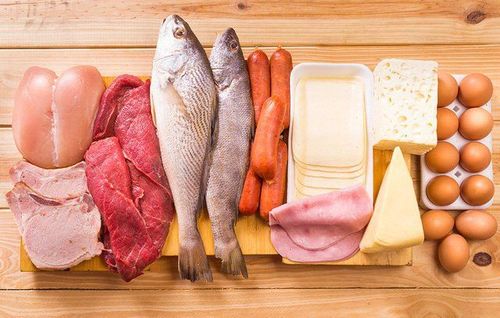
Có thể bổ sung đạm cho bé dị ứng đạm sữa bò từ các nguồn thực phẩm khác.
4. How long to use milk substitute?
The shelf life of replacement products lasts from 6 to 12 months. Then, have the child perform a milk protein tolerance test before using it again.Note: In addition to parents, all people involved in child care (schools, babysitters, teachers, grandparents,...) must know which foods the child is allergic to. Children's parents must specify the child's allergy history in the relevant records, always carefully check the ingredients listed on the product label before giving it to the child to use.
For children to be healthy and develop well, it is necessary to have a nutritious diet in terms of quantity and quality balance. If children are not provided with adequate and balanced nutrients, it will lead to diseases of excess or lack of nutrients, which adversely affect the comprehensive development of children in terms of physical, mental and motor skills.
Children who do not eat properly are at risk of micro-mineral deficiency causing anorexia, growth retardation, malabsorption,... If they notice the above signs, parents should supplement their children with products. The supplement contains lysine, essential micro-minerals and vitamins such as zinc, chromium, selenium, and B vitamins to help fully meet the nutritional needs of children. At the same time, these essential vitamins also support digestion, enhance nutrient absorption, help improve anorexia, and help children eat well.
Parents can learn more:
Signs of zinc deficiency in children
Micronutrient deficiency and failure to gain weight in children
Please regularly visit Vinmec.com website and update useful information to take care of your child. Take care of the baby and the whole family.





